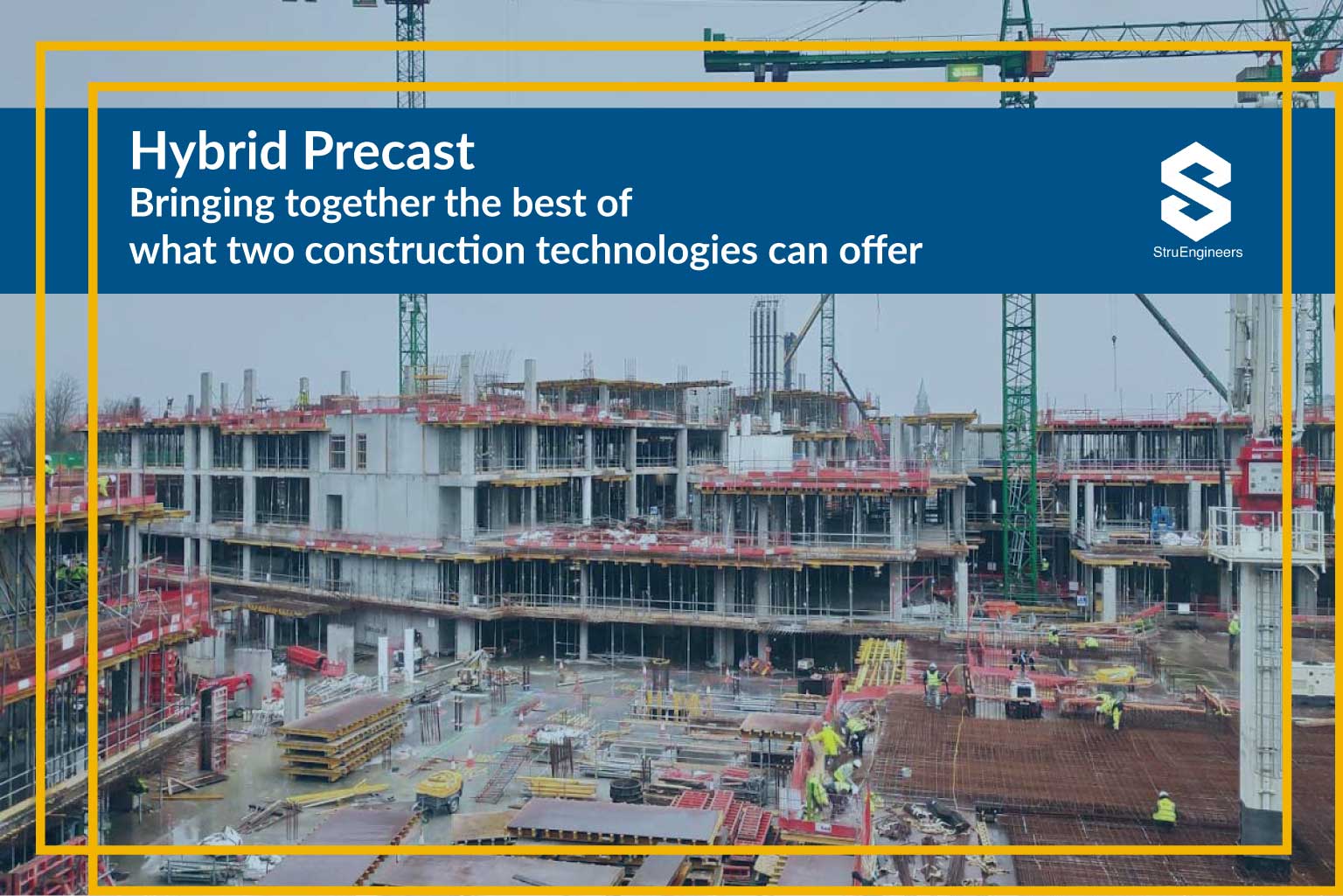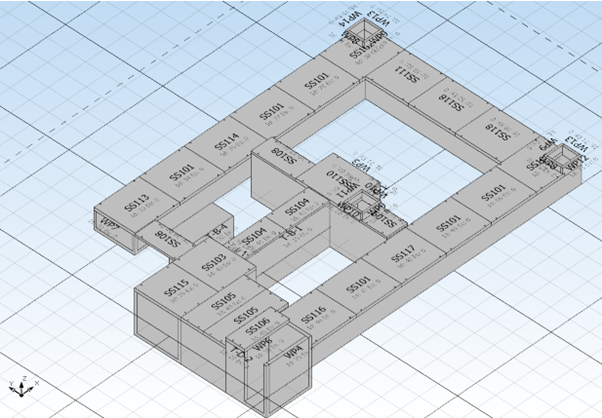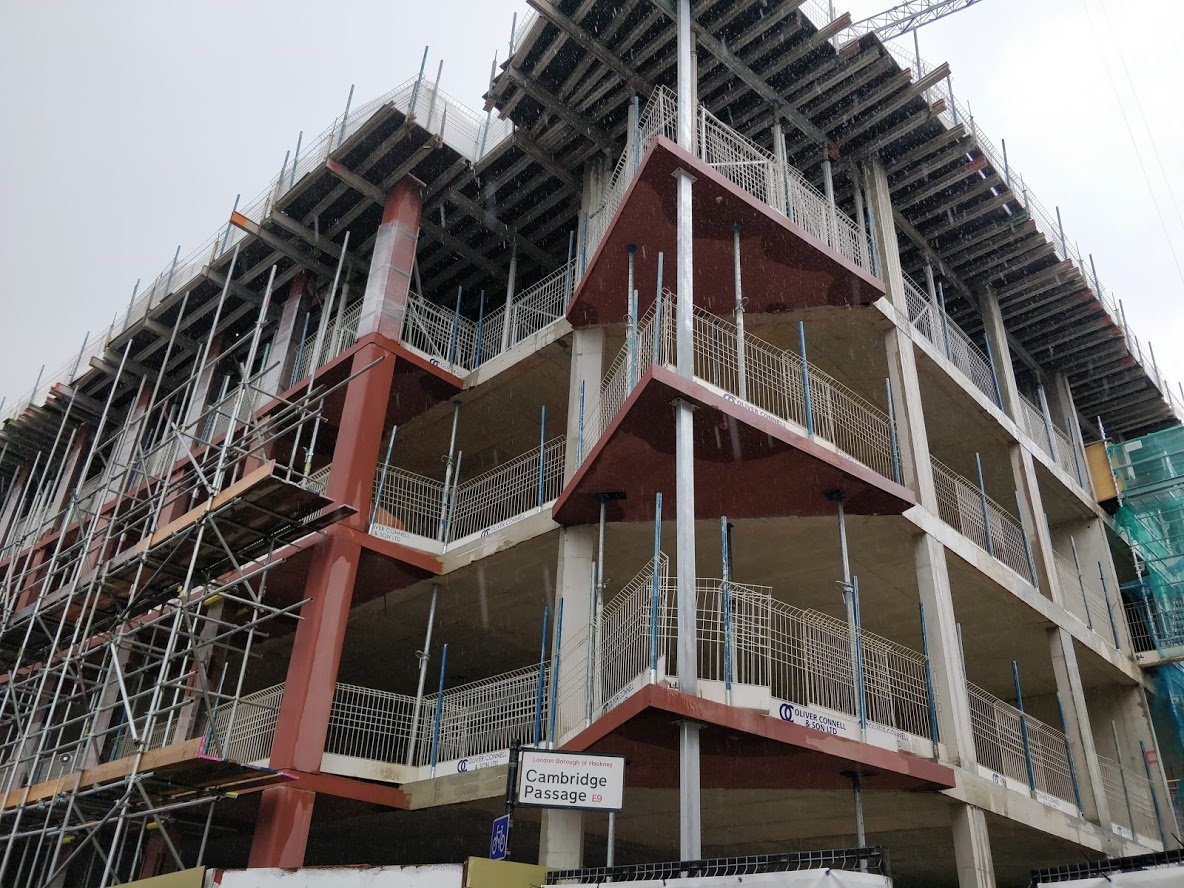Hybrid Precast
Embracing the best of both worlds, our hybrid precast method combines the efficiency of precast concrete and the flexibility of cast-in-place construction. Trust us to expertly design and detail your project, ensuring that every element is executed to perfection. With our hybrid approach, we bring your vision to life faster, better and at a lower cost.
As the name suggests, hybrid precast projects are a combination of precast and cast-in-situ construction opted for, with a view to leverage the advantages of both the construction methodologies. Precast construction offers the benefits of speed, accuracy, high-quality finish, low pollution, and negligible wastage at site, while cast-in-situ offers the benefit of economy and flexibility of shape of the building. Cast-in-situ also gives relatively better scope for more creative designs.
The reason or motivation behind opting for hybrid precast structures can be better understood with practical examples. Let us look at the following cases:
Case 1
The use of hybrid precast construction offers several benefits, including reduced construction time, improved quality control, and increased flexibility in design. Additionally, the combination of different materials allows for a wider range of architectural possibilities, enabling designers to create structures that are both aesthetically pleasing and functional.
Naturally, our client adopted the hybrid system as the benefits from offsite manufacturing of precast elements and in-situ concrete are enormous. Prefab concrete elements save time, offer better quality product whereas in-situ offers flexibility with designs and aesthetic approach.
Case 2
This is an executed project and an interesting one indeed! Bendcrete skateparks specialize in making skateparks and scooter parks and have produced many popular skatepark venues in the UK and Ireland. This project was, however, slightly different. It was a C-shaped underground tunnel of 55 meters length in a kids’ play area. The idea was to give kids an experience as to how it feels like while crawling through tunnels.
Here too, the client wanted the entire tunnel to be built with precast, but did not have much time on hand so finally the contractor was advised to go for a cast-in-place bottom slab. In this case, the entire construction was possible in precast, but ended up as a hybrid precast project due to shortage of time.
Case 3
We are discussing the construction of a large villa for one of our clients in the UK. The proposed villa is coming up near a riverbank on a sloped contour. The client wanted an all-precast structure, but the project size is not big enough to justify casting of the elements on site, which means the elements must be procured from a precast manufacturer situated away from the construction site.
After carefully evaluating factors like the distance of the precast factory from site, the truck capacity (for transporting the elements) and the crane handling capacity, it was decided that the foundation shall be cast-in-situ and the floor slabs would be hollow-core with a thin layer of screed on top for better insulation and waterproofing. Therefore, this is ending up as a hybrid precast project due to economic considerations.
Frequently Asked Questions about Hybrid Precast and Detailing
Hybrid precast systems are suitable for a wide range of projects, including commercial buildings, residential complexes, infrastructure developments, and industrial structures, where both structural integrity and architectural aesthetics are essential.
Yes, StruEngineers offers custom precast concrete detailing services for hybrid precast projects, ensuring that each project’s unique requirements and specifications are met with precision and efficiency.
Hybrid precast systems offer benefits such as improved structural performance, faster construction times, reduced labor costs, and enhanced design flexibility, making them ideal for complex projects.
Precast concrete detailing is crucial in hybrid precast systems as it ensures the accurate integration of different construction elements, leading to precise manufacturing and seamless assembly on-site.
Hybrid precast combines traditional precast concrete elements with in-situ concrete or other construction methods, offering enhanced flexibility and performance. This approach can optimize both the structural and architectural aspects of a project.


